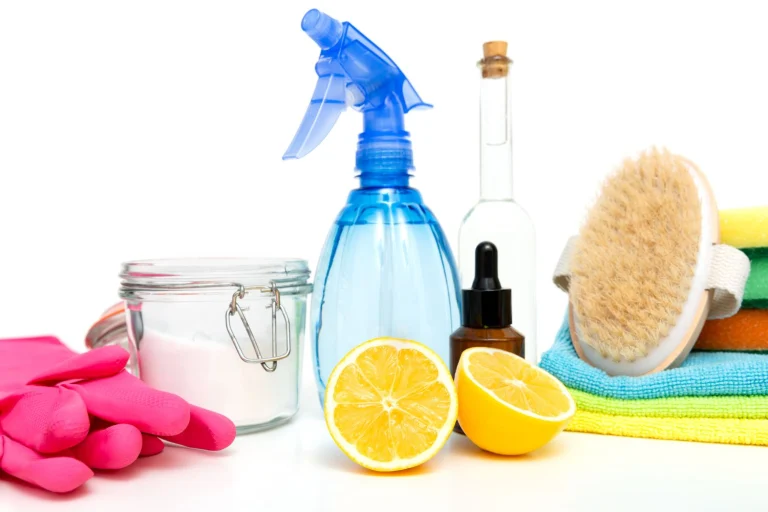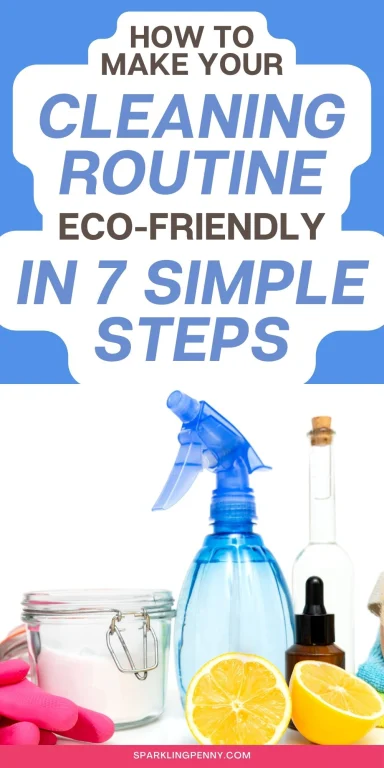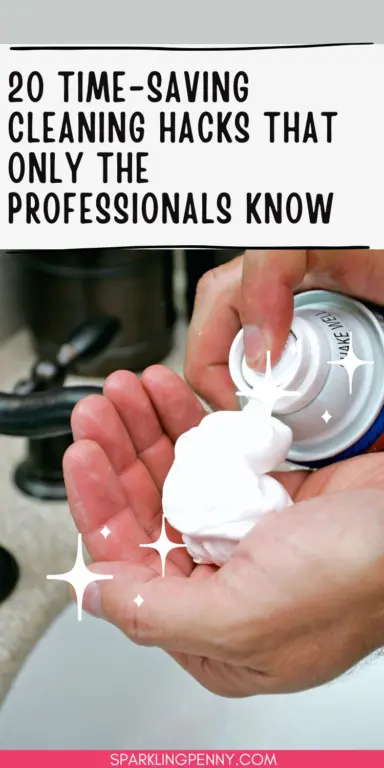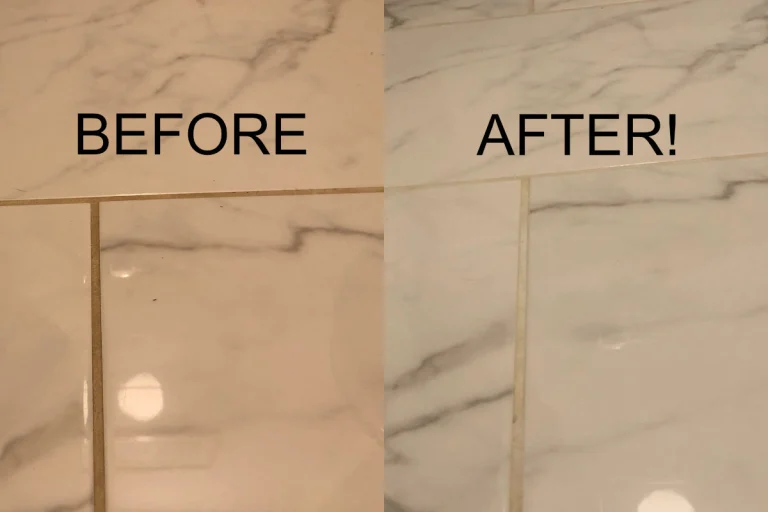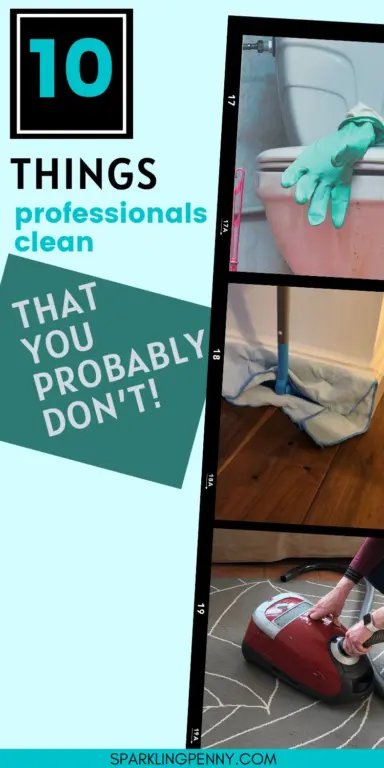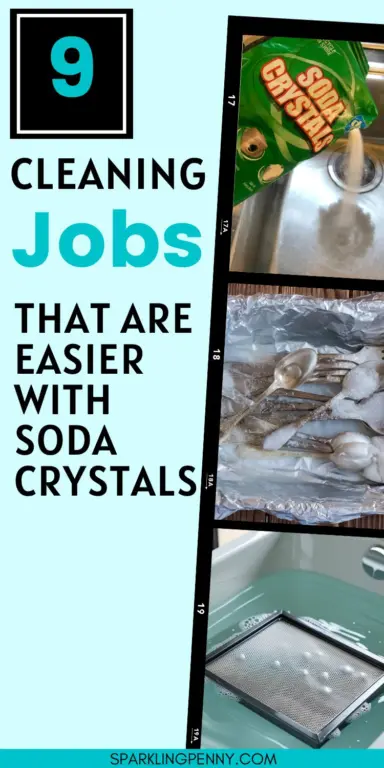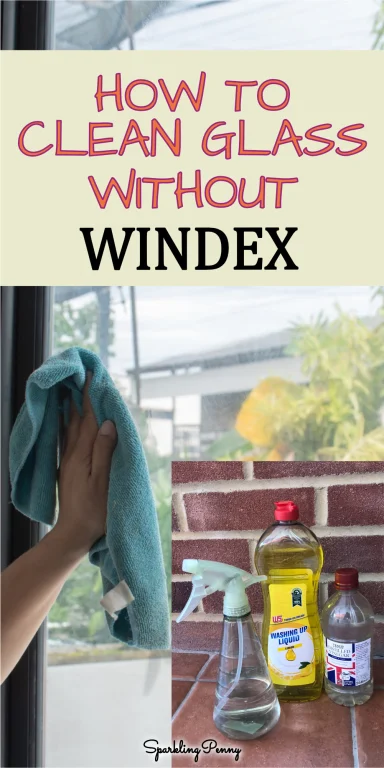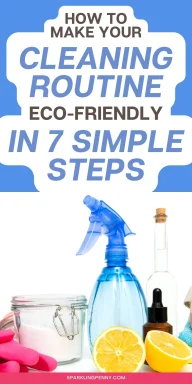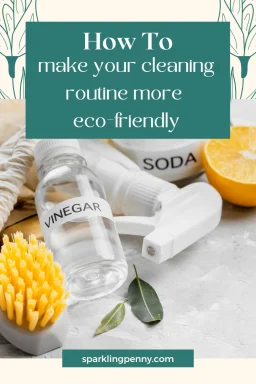Are you tired of using harsh chemicals and disposable products in your cleaning routine? Do you want to make a positive impact on the environment while keeping your home clean and healthy? It’s time to switch to an eco-friendly cleaning routine!
By making small changes to your cleaning habits, you can reduce your carbon footprint and help protect the planet. Not only is an eco-friendly cleaning routine better for the environment, but it’s also better for your health. Many conventional cleaning products contain harmful chemicals that can be dangerous to inhale or come into contact with.
Heads up: I sometimes use affiliate links. When you click these links and make a purchase, I may get a small commission. It won't cost you anything but it helps me to run this site.
Step 1: Review your current cleaning products
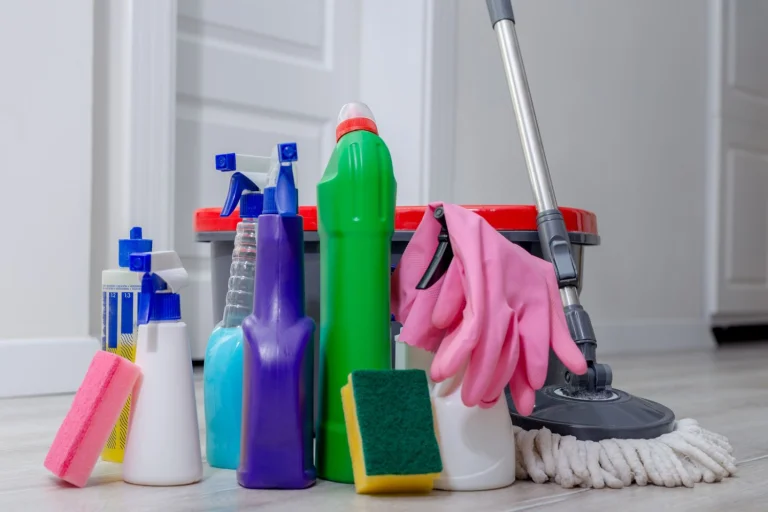
Before making any changes to your cleaning routine, take stock of the products you currently use.
Many conventional cleaning products contain harmful chemicals that can harm both your health and the environment.
- Check the labels on your cleaning products. Look for any warning labels or symbols that indicate the product is toxic or hazardous. If you see any of these, it’s time to consider switching to a more eco-friendly alternative.
- Research the ingredients in your cleaning products. Many common ingredients, such as bleach and ammonia, can be harmful to the environment and can cause respiratory problems if inhaled.
- Consider the packaging of your cleaning products. Many conventional products come in single-use plastic containers that end up in landfills.
- Think about the overall impact of your cleaning routine on the environment. Do you use disposable cleaning wipes or paper towels? Do you use excessive amounts of water when cleaning? These are all factors to consider when evaluating your current cleaning routine.
Step 2: Switch to eco-friendly equivalents
One of the easiest ways to make your cleaning routine more eco-friendly is to switch to cleaning products that are non-toxic and biodegradable.
Here are a few reasons why you should consider making the switch:
- Eco-friendly cleaning products are made from natural and renewable resources, which means they are sustainable and have a lower impact on the environment.
- Many conventional cleaning products contain chemicals that can be harmful to aquatic life and other wildlife, as well as contribute to air pollution.
- Switching to eco-friendly cleaning products can help reduce your exposure to harmful chemicals, which can cause respiratory problems, skin irritation, and other health issues.
Step 3: Make your own cleaning products
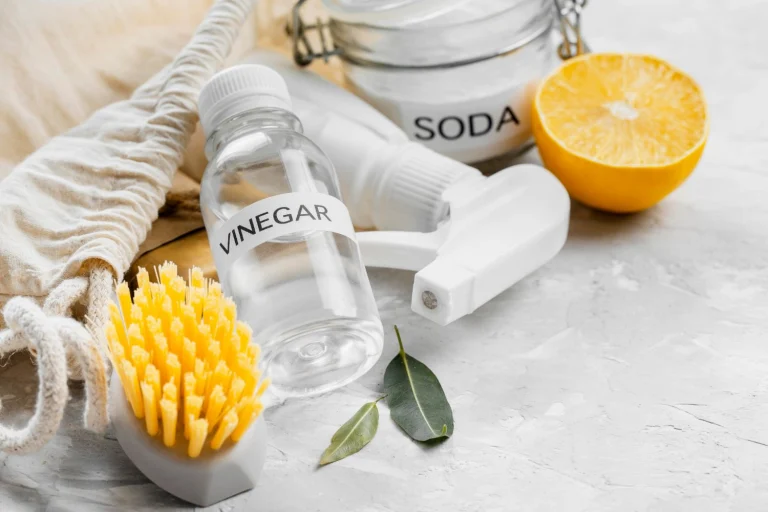
Switching to eco-friendly cleaning products doesn’t have to cost the earth. Many of the items you already have in your pantry can be used for cleaning!
Here are some examples of natural ingredients and their uses:
- Baking soda: a gentle abrasive that can be used to scrub surfaces, deodorize carpets, and absorb odors.
- Vinegar: a natural disinfectant that can be used to clean windows, remove stains, and freshen up laundry.
- Lemon juice: a natural bleach that can be used to remove stains and brighten surfaces.
- Essential oils: add a few drops of your favorite essential oil to your cleaning solution for a pleasant scent and added cleaning power.
Here are some easy recipes to make:
All-purpose cleaner
- 1 cup distilled white vinegar
- 1 cup water
- 10-20 drops of essential oil (optional)
Mix all ingredients in a spray bottle and shake well before use. This cleaner is great for countertops, floors, and other surfaces.
Glass cleaner
- 1 cup of water
- 1/4 cup of vinegar
- 1/4 cup of rubbing alcohol
- 1 tablespoon of cornstarch
- 10 drops of essential oil (optional)
Mix all the ingredients together in a spray bottle and shake well before using. Spray the solution onto the glass surface and wipe with a microfiber cloth or newspaper for a streak-free shine.
I have lots more ideas in this post: Top 10 Natural Cleaning Products You Can Make at Home.
Step 4: Reduce water waste
Water is a precious resource that we should conserve as much as possible.
Here are a few tips to reduce water waste while cleaning:
- Use a spray bottle. Instead of using a bucket of water to clean surfaces, use a spray bottle to apply a cleaning solution directly to the area that needs cleaning. This can significantly reduce the amount of water you use.
- Use microfiber cloths. Microfiber cloths are designed to clean with less water. They are highly absorbent and can clean surfaces with minimal moisture.
- Use steam cleaners. Steam cleaners use very little water and can be used to clean a variety of surfaces, from floors to upholstery. They are also effective at killing germs and bacteria without the need for harsh chemicals.
- Reuse cleaning water. If you do need to use a bucket of water for cleaning, try to reuse the water as much as possible before disposing of it. For example, you could use the water to clean less dirty areas of the house first, and then use it to clean more heavily soiled areas.
- Use a dishwasher instead of washing dishes by hand. Dishwashers use less water and energy than hand washing.
Another way to reduce water waste is by fixing leaks as soon as possible. According to EPA, a dripping faucet can waste up to 3,000 gallons of water per year.
Step 5: Use less electricity for cleaning
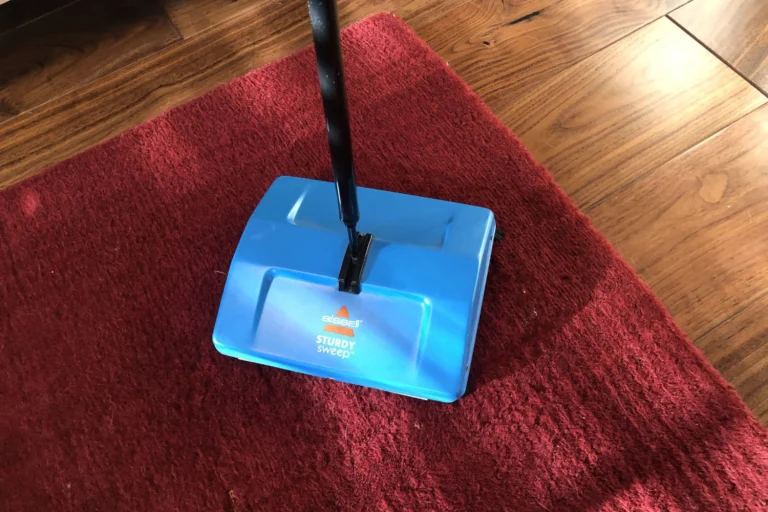
Cleaning your house can be an energy-intensive activity, but it doesn’t have to be that way.
For instance, by using manual cleaning gadgets, such as a Bissell floor sweeper and a Swiffer floor mop. These gadgets do not require electricity and can be more effective than their electric equivalents. I found that my Bissell actually picks up pet hair better than my vacuum cleaner.
You can also save electricity when doing laundry by washing clothes less often and washing laundry on cold. Additionally, consider line-drying your clothes when possible and reducing tumble drying time by using a second spin cycle, clearing the filter, adding a dry fluffy towel or wool dryer balls, and half-drying clothes on an indoor airer.
Find out lots more on how to save energy when cleaning your house in this post: How To Use Less Electricity Cleaning Your House.
Step 6: Use reusable cleaning tools
One of the easiest ways to make your cleaning routine more eco-friendly is to switch to reusable cleaning tools. By using reusable tools, you can significantly reduce the amount of waste you produce and save money in the long run.
Here are some reusable cleaning tools you can start using today:
- Microfiber cloths. These cloths are great for cleaning surfaces and can be washed and reused multiple times. They are also more effective at capturing dust and dirt than traditional cotton cloths.
- Mop pads. Instead of using disposable mop pads, invest in a mop with reusable pads. These can be washed and used multiple times, reducing waste and saving you money in the long run.
- Dish towels. Instead of using paper towels to clean up spills and messes, use dish towels that can be washed and reused. This will help reduce the amount of waste you produce and save you money on paper towels.
- Spray bottles. When making your own cleaning solutions, reuse your spray bottles.
When choosing reusable cleaning tools, look for products made from sustainable materials like bamboo or recycled plastic. You can also make your own cleaning tools using items you already have at home, like old t-shirts or towels.
Step 7: Proper disposal of cleaning products
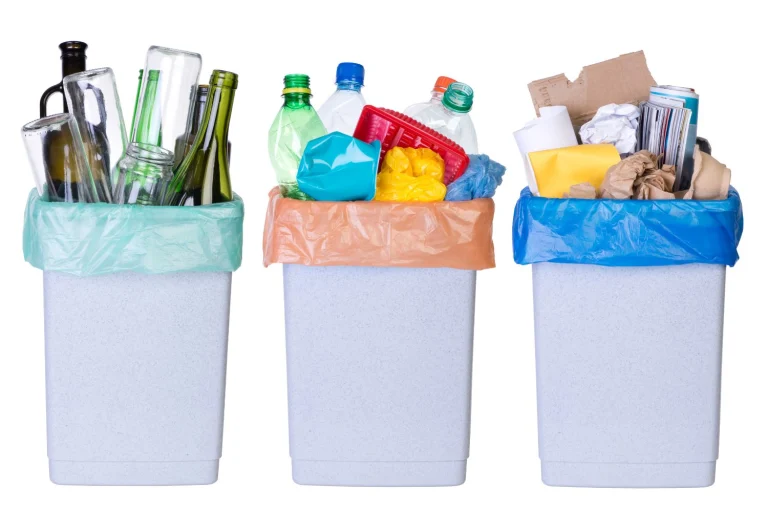
When it comes to making your cleaning routine more eco-friendly, it’s not just about choosing the right products. It’s also important to dispose of them properly.
Here are some tips:
- Read the label. Before you dispose of any cleaning products, read the label for specific instructions. Some products may need to be disposed of in a certain way to avoid harm to the environment or to people.
- Recycle. If possible, recycle empty cleaning product containers. Check with your local recycling center to see what types of containers are accepted.
- Dispose of hazardous waste properly. Some cleaning products, such as bleach and ammonia, are considered hazardous waste and should not be thrown in the trash. Check with your local hazardous waste disposal facility for instructions on how to dispose of these products.
- Avoid pouring down the drain. Never pour cleaning products down the drain, as they can harm the environment and contaminate water sources. Instead, dispose of them according to the label instructions or take them to a hazardous waste disposal facility.

